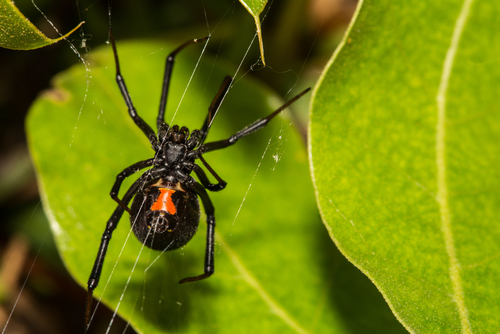Tips for Identifying Black Widow Spiders

Spiders are a common sight in many homes and gardens, and most of them are harmless. However, some species, like the black widow spider, can be potentially dangerous due to their venomous bite. Identifying these venomous arachnids is crucial for your safety. In this blog post, we will explore tips for identifying black widow spiders so you can take appropriate precautions and, if necessary, seek professional help when you encounter one.
1. Recognizing the Female Black Widow
The female black widow spider is the most notorious and venomous of the species. To identify her, look for these distinctive features:
- Glossy Black Color: Female black widows are typically glossy black in color, with a sleek, shiny appearance. They often have a distinctive hourglass-shaped red or orange mark on their abdomen. This hourglass is one of the key identifying features.
- Red or Orange Hourglass: As mentioned, the red or orange hourglass mark is located on the underside of the abdomen. It can vary in shape but is usually distinctive and eye-catching.
- Long, Slender Legs: Black widows have long and slender legs compared to their body, which is relatively small and round. Their legs are often brownish or grayish in color.
2. Identifying the Male Black Widow
Male black widow spiders have a significantly different appearance compared to their female counterparts. While they are not as dangerous as females because their venom is less potent, it’s still helpful to know how to identify them:
- Smaller Size: Male black widows are considerably smaller than females. They are typically only about half the size of the females, with a smaller, elongated abdomen.
- Grayish-Brown Color: Unlike the shiny black color of females, male black widows are usually grayish-brown with various patterns and markings. They do not have the red or orange hourglass mark.
- Distinctive Markings: Some male black widows may have a row of red or white spots on their abdomen’s top side, which can help in their identification.
3. Egg Sacs and Webs
In addition to spider appearance, you can identify black widows by their distinctive egg sacs and webs:
- Egg Sacs: Black widow egg sacs are white or cream-colored and roughly the size of a marble. They are often oval or spherical in shape and can be found in the spider’s web.
- Web Design: Black widow webs are irregularly shaped, three-dimensional, and messy compared to the symmetrical and neat webs spun by many other spider species. The web is often strong and sticky, designed to catch insects.
- Location of Webs: Black widows tend to build their webs in secluded, sheltered areas such as garages, sheds, woodpiles, and other dark corners. They prefer dark, undisturbed spaces.
4. Behavior and Movement
Observing a spider’s behavior and movements can also aid in identification. Black widows exhibit distinct behaviors that can help you recognize them:
- Shy and Reclusive: Black widow spiders are known for being shy and reclusive. They often hide in their webs or dark corners during the day and come out at night to hunt.
- Quick Retreat: When disturbed, black widows are more likely to retreat and hide rather than stand their ground or become aggressive. They will only bite in self-defense.
- Erratic Movements: When black widows move, they tend to have an erratic, jerky motion, which can be different from the smoother, more deliberate movements of non-venomous spiders.
5. Seek Professional Identification
While the aforementioned tips can help you identify black widow spiders, it’s important to remember that spider identification can be tricky, especially for non-experts. If you encounter a spider that you suspect is a black widow or are unsure of its identity, it is advisable to seek professional identification.
Local pest control experts, entomologists, or arachnologists can accurately identify the spider species and provide guidance on how to deal with it. They can also offer safe removal options if necessary.
6. Safety Precautions
If you suspect the presence of black widow spiders in or around your home, it’s essential to take safety precautions:
- Do Not Handle: Avoid handling black widow spiders, as their bites can be painful and potentially dangerous.
- Wear Gloves: If you need to remove or relocate a spider, wear gloves to protect yourself.
- Inspect Dark Corners: Regularly inspect dark, secluded areas where black widows are more likely to build their webs.
- Keep Your Home Clean: Reducing clutter and maintaining cleanliness can discourage spider infestations.
- Professional Pest Control: Consider hiring a professional pest control service if you have a significant black widow infestation.
Conclusion
Identifying black widow spiders is essential for your safety and peace of mind. Familiarizing yourself with the physical characteristics, behaviors, and habitat preferences of these venomous spiders can help you take the necessary precautions when encountering them. Remember that if you’re uncertain about a spider’s identity, seeking professional assistance is the safest approach. By following these tips, you can coexist with spiders while minimizing potential risks.
